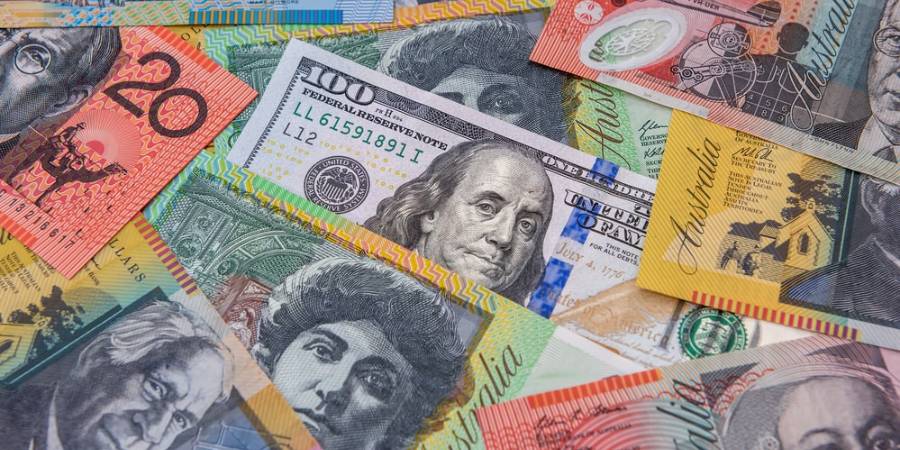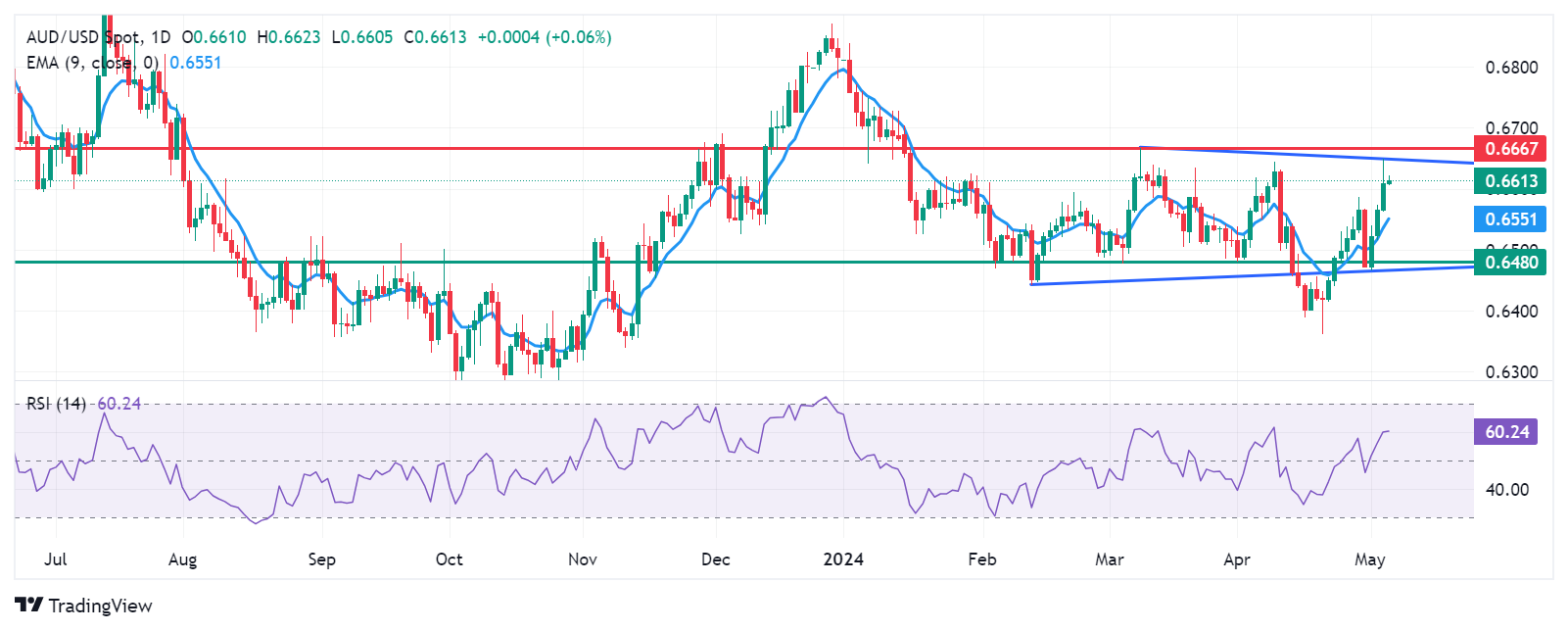
■The Australian Dollar rises on risk-on sentiment after softer US jobs data released on Friday.
■The Australian Dollar received strength from the hawkish sentiment surrounding the RBA.
■The Nonfarm Payrolls report indicated fewer jobs added than anticipated in April, marking a notable deceleration from March’s reading.
The Australian Dollar (AUD) maintained its winning streak for the fourth consecutive session on Monday, buoyed by a hawkish sentiment surrounding the Reserve Bank of Australia (RBA). This optimism bolsters the strength of the Aussie Dollar, providing support to the AUD/USD pair.
The Australian central bank is widely anticipated to hold the cash rate steady at a 12-year high of 4.35% in its upcoming Tuesday meeting. However, there are expectations that it may reintroduce a soft tightening bias, particularly after last week's higher-than-expected inflation data, as reported by The Australian Financial Review.
The US Dollar Index (DXY), which gauges the performance of the US Dollar (USD) against six major currencies, remains under pressure due to softer-than-expected US jobs data released on Friday. This development revived hopes for potential interest rate cuts by the US Federal Reserve (Fed) later this year. The prevalent risk appetite could continue this week following Fed Chair Jerome Powell's relatively dovish stance on the monetary policy outlook during Wednesday's session.
Daily Digest Market Movers: Australian Dollar appreciates amid hawkish RBA
TD Securities Inflation (YoY) released by The University of Melbourne, came down to 3.7% in April, from the previous month’s 3.8%. In the meantime, the monthly rate remained at 0.1%.
On Friday, Nonfarm Payrolls showed that the US economy added 175,000 jobs in April, lower than the estimated 243,000 and signaling a significant slowdown from March's addition of 315,000 jobs.
The Judo Bank Australia Composite Purchasing Managers Index (PMI) declined in April, indicating a slightly slower growth in Australian private sector output. The growth in business activity was mainly confined to the service sector while manufacturing output continued to decrease.
According to forecasts by analysts at Commonwealth Bank and Westpac, the RBA’s interest rate is expected to peak at its highest point at 4.35% in November 2023, then decrease to 3.10% by December 2025.
Australia’s central bank is expected to maintain its key policy rate at 4.35% for a fourth consecutive meeting on Tuesday, and likely until the end of September, as per a Reuters poll of economists. These economists predict only one interest rate cut this year.
Federal Reserve Bank of Chicago President Austan Goolsbee commented on the April labor market data, stating to Bloomberg TV that the report was robust. Goolsbee emphasized the need for the Fed to ascertain whether it is still committed to reducing inflation. He noted that if the Fed maintains a restrictive stance for too long, it will need to consider the employment aspect of its mandate.
According to the CME FedWatch Tool, the probability of the Federal Reserve keeping interest rates within their current range of 5.25%-5.50% during the June meeting has increased to 91.6%, up from 88.9% a week ago.
Technical Analysis: Australian Dollar holds ground above the psychological level of 0.6600
The Australian Dollar trades around 0.6620 on Monday. The pair remains positioned in a symmetrical triangle pattern, with the 14-day Relative Strength Index (RSI) above the 50-level, indicating a bullish bias.
The AUD/USD pair might retest the upper boundary around the level of 0.6649. A breakthrough above this level could lead the pair to explore the region around March’s high of 0.6667.
On the downside, the AUD/USD pair could find immediate support at the psychological level of 0.6600, followed by the nine-day Exponential Moving Average (EMA) at 0.6552. A break below the latter could exert pressure on the pair to test the throwback support at the 0.6480 level, followed by the lower boundary of the symmetrical triangle around the level of 0.6465.
AUD/USD: Daily Chart

Australian Dollar price today
The table below shows the percentage change of the Australian Dollar (AUD) against listed major currencies today. The Australian Dollar was the strongest against the New Zealand Dollar.
|
USD |
EUR |
GBP |
CAD |
AUD |
JPY |
NZD |
CHF |
USD |
|
-0.08% |
-0.05% |
-0.06% |
-0.09% |
0.02% |
0.05% |
-0.02% |
EUR |
0.07% |
|
0.01% |
0.01% |
-0.02% |
0.08% |
0.13% |
0.04% |
GBP |
0.03% |
-0.01% |
|
0.00% |
-0.04% |
0.07% |
0.09% |
0.03% |
CAD |
0.15% |
0.05% |
0.09% |
|
0.28% |
-0.15% |
0.08% |
0.04% |
AUD |
0.10% |
0.02% |
0.03% |
0.03% |
|
0.11% |
0.14% |
0.06% |
JPY |
-0.04% |
-0.08% |
-0.04% |
-0.09% |
-0.10% |
|
0.06% |
-0.06% |
NZD |
-0.05% |
-0.11% |
-0.09% |
-0.10% |
-0.16% |
-0.02% |
|
-0.06% |
CHF |
0.03% |
-0.04% |
-0.03% |
-0.03% |
-0.07% |
0.06% |
0.07% |
|
The heat map shows percentage changes of major currencies against each other. The base currency is picked from the left column, while the quote currency is picked from the top row. For example, if you pick the Euro from the left column and move along the horizontal line to the Japanese Yen, the percentage change displayed in the box will represent EUR (base)/JPY (quote).
* The content presented above, whether from a third party or not, is considered as general advice only. This article should not be construed as containing investment advice, investment recommendations, an offer of or solicitation for any transactions in financial instruments.


